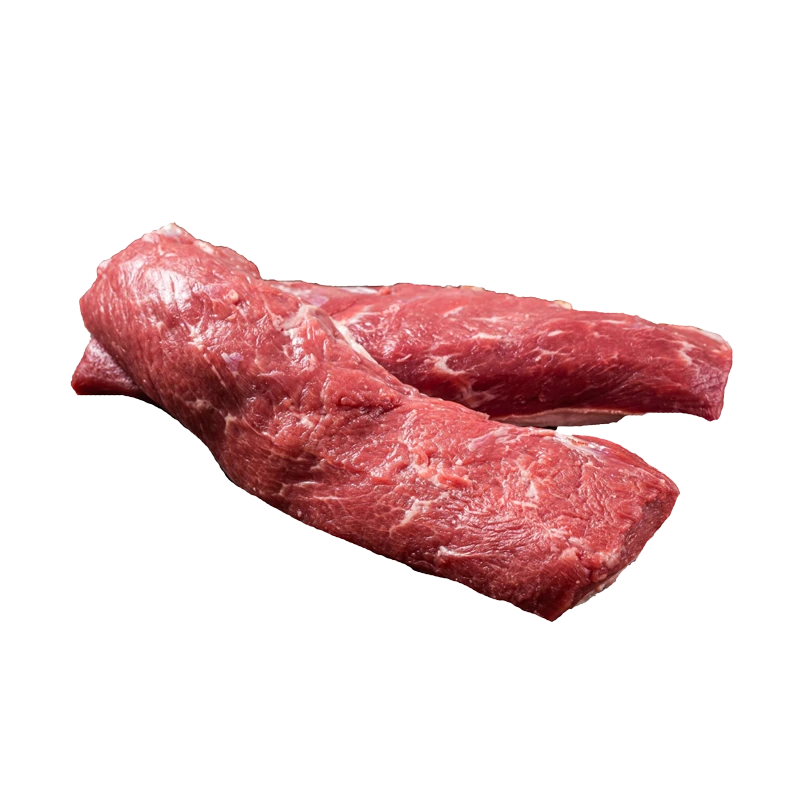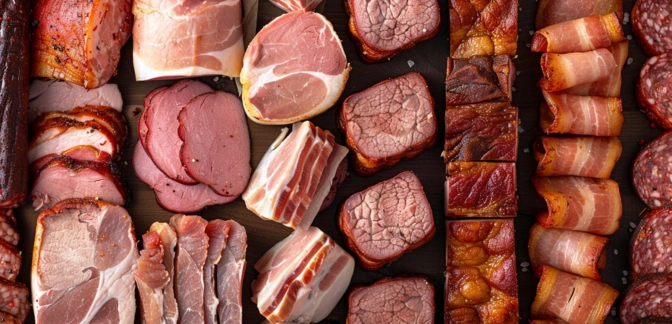Loin — Nutrients, Health Benefits, And Shopping Tips

Written by Listonic Team
Last update on September 4, 2024
Nutrition facts
Nutrition facts
Amount per 100 g
Calories
🔥 143 kcal
| Nutrition per: 100 g | Value | % Daily Value* |
|---|---|---|
| Carbs | 0 g | - |
| Fiber | 0 g | - |
| Sugars | 0 g | - |
| Glycemic Index | 0 | - |
| Protein | 26 g | 52% |
| Sodium | 62 mg | 2.7% |
| Total Fat | 4 g | 5.13% |
*The % of Daily Value (DV) tells you how much a nutrient in a serving of food contributes to a daily diet. 2,000 calories a day is used for general nutrition advice.
26 g
💪 High Protein Content
Did you know?
Health benefits
- High in protein, essential for muscle growth, repair, and overall body function.
- Contains essential vitamins and minerals such as B vitamins, iron, and zinc, which support energy metabolism, immune function, and overall health.
- Lean cuts (like pork loin or beef loin) are low in fat, making them a heart-healthy option.
Health risks
- High fat content particularly in certain cuts, which can raise cholesterol levels and increase the risk of heart disease when consumed frequently.
- High calorie content which can contribute to weight gain if consumed in large quantities or as part of a calorie-dense meal.
- Risk of contamination with harmful bacteria such as Salmonella or E. coli, particularly if the loin is not properly cooked to a safe internal temperature.
- Potential for high sodium content in processed or seasoned loin products, which can contribute to hypertension and increased cardiovascular risks.
How to choose loin
Loin cuts from pork, beef, or lamb should have a fine marbling of fat throughout the meat, enhancing its flavor and tenderness upon cooking. The meat should be pinkish-red, indicating it is fresh and properly aged.
Do not choose loin cuts that appear dry or have brown edges, as this can suggest the meat has been exposed to air for too long. Quality loin should cook up tender and juicy, perfect for roasting or grilling to achieve a flavorful dish.

How to store loin
Fresh loin cuts should be wrapped tightly in plastic wrap or butcher paper and stored in the refrigerator. Refrigeration helps maintain the meat's quality for up to three to five days. For longer storage, freezing is the best option.
Do not leave loin cuts out at room temperature for prolonged periods, as this can promote bacterial growth. Avoid storing loin in flimsy or poorly sealed packaging to prevent exposure to air and moisture, which can lead to freezer burn or spoilage.
✅ Extra Tip
How long does it last?
Loin (meat) can last for 3-5 days in the refrigerator. For longer storage, loin can be frozen for up to 6-12 months. Proper packaging, such as vacuum-sealing, helps maintain its quality over longer storage periods.
What to do with leftovers?
Leftover loin, whether pork, beef, or lamb, can be used in a variety of savory dishes. Slice it thinly and add to sandwiches, wraps, or salads for a flavorful protein source, or chop it up and mix into a stir-fry with vegetables and a savory sauce. Loin is also great when added to a pasta dish with a tomato or cream sauce.
Use loin in a casserole with potatoes, vegetables, and cheese, or mix it into a stew or soup for added richness and flavor. If you have a lot of loin, consider making a batch of loin tacos with fresh salsa and avocado, or using the meat in a grain bowl with quinoa and roasted vegetables. Loin can also be served as a topping for pizzas or flatbreads, or used as a filling for savory pies. For a quick snack, reheat the loin slices and serve them with a dipping sauce or on a bed of greens.
👨⚕️️ Medical disclaimer
Discover products from other categories
Listonic Team
Fact-checked
Our editorial team checked this article to make sure it was accurate at the time of publishing it.
Get the top-rated shopping list app on your phone!







